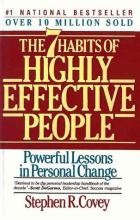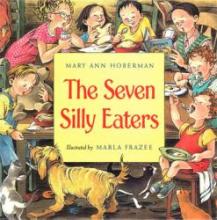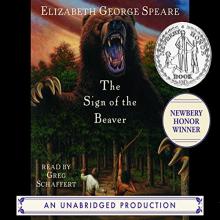No name
The Seashell on the Mountaintop
The Second Mrs. Gianconda
The Second Mrs. Giaconda is a fascinating book about a young thief who becomes apprenticed to Leonardo da Vinci. This work of historical fiction is set in the latter half of the fifteenth century. The plot revolves around three characters- the famous artist, Leonardo, his apprentice, Salai, and the Duchess Beatrice d'Este. The novel is written from Salai's viewpoint, and we get a good feel for Leonardo's character. We see that Leonardo is shy, and yet brilliant. We see how Leonardo is so unreliable, particularly when he is distracted by his work. Leonardo was commissioned to paint a mural on the refectory wall of a local monastary in Milan. Unfortunately, he took so long with his masterpiece, that the monks began complaining about the loss of their dining hall! Leonardo is fascinated by everything around him. He studies plants, rivers, mountains, rocks and trees. He builds war engines, and studies flying machines. It is interesting to see the rivalry between Michelangelo and Leonardo, and how their lives intersect. The title, The Second Mrs. Gianconda, is a reference to the Mona Lisa, Leonardo's most famous work. The author uses this novel to weave the story behind the painting of the Mona Lisa. The back pages of the novel have black and white reproductions of some of the paintings of Leonardo da Vinci.
We used The Second Mrs. Gianconda as a read-aloud for our entire family. The novel was part of our Renaissance studies. This book was a good beginning to the study of the Renaissance artists. The book was entertaining, and informative. We would recommend it highly as a read-aloud, or for children ages ten and above.
Two references are disturbing in this book. One, the duke of Milan is involved, in two instances, with another woman. No mention of a sexual relationship is made, but it is still a problematic area for Catholic readers. And, secondly, on page 121, there is a reference to Isabella 'breeding dwarfs' for servants at her court. Though some texts contend that Leonardo had a homosexual affair with Salai, this novel makes no mention of that, or of any homosexual tendencies in Leonardo.
The Secret of Pooduck Island
Recommended in Catholic Authors: 4-Sight Edition
Donated for review by Neumann Press
The Secret of the Ruby Ring
While the story is told from the point of view of a young Irish Catholic girl, it is not a religious book. The theme of the book relies on her Irish Catholic heritage and how Irish Catholics were treated at this time in history in their own country. This book would be of interest to anyone looking for an understanding of how a manor home is run, the social complexities of this time for men, women, and children, the situation of the oppressed by others, and a look at this time in Ireland's history.
At the same time, this is a children's book and the tone of the story is appropriate for children, while showing them (and not telling them) all the wonderful things they can be grateful for.
The Seven Habits of Highly Effective Families
This is a great book! Although Stephen Covey is a Mormon, it is amazing how Catholic his underlying principles are. I was particularly struck by this because I happened to be reading it alongside The World's First Love by Bishop Fulton Sheen, which is about Our Lady. Both authors discussed the true meaning of freedom at length and their principles and conclusions were remarkably similar. The book covers seven major ideas, which when incorporated into our lives, can have a profound effect on our ability to accomplish goals and deal well with other people. These seven habits are also addressed in Mr. Covey's earlier book, The Seven Habits of Highly Effective People, but here they are applied to those we have to live with every day and have the greatest responsibility toward. The language used is not highly religious. But if you read between the lines and consider his ideas in light of your Faith, you will find this a very useful book for enhancing your family life on both the natural and spiritual levels. An excellent book to read alongside this book in order to amplify the spiritual considerations is A Map of Life by Frank Sheed. The two books together might make an excellent summer reading and discussion program for the teenagers and adults in your household.
The Seven Habits of Highly Effective People
Having a healthy skepticism of "self-help" books caused me to be lacking in enthusiasm when this book was recommended to me by my older brother. He had been studying it with some friends at work and had high praise for its content. I think I would never have picked it up except that I happened to be at my brother's house while he and my mom read a chapter aloud. Wow. It wasn't anything like what I had expected and turned out to be quite good. I believe that this book has helped me to deal with and understand others better, focus my energy more on helpful and productive things and overcome some of the frustrations I've experienced as a mother of small children. I used to scoff at the idea of "writing down goals" and such. After I read the book, I purchased a planner - a binder which includes a detailed calendar, address book, check register, and room for other important information. Using the planner and the ideas from Mr. Covey's book really helped me get the ball rolling on my plans and ideas for homeschooling.
The Seven Silly Eaters
The Shadow of His Wings
The story is quite simply related and details about the horrors that surrounded Fr. Goldmann on a daily basis are handled delicately enough to make the story appropriate for most high schoolers. Without being the least bit preachy, the story demonstrates in a powerful way the mysterious ways of God's will and the power of prayer and suffering. It's a very, very beautiful and worthwhile book. As an added bonus, Americans who are accustomed to seeing the story through the eyes of the "Allies" will find the German perspective (despite the author's clear anti-Nazi position) quite enlightening. This may help provide a much fuller sense of what the war was about.
Note: The story is also available on Audio Cassette, produced by St. Joseph Communications.
The Sign of the Beaver
This is a story about a twelve year old boy named Matt who lived in Maine about 250 years ago. Near the beginning of the story, all of Matt's family (besides Matt) went away. One day he was fishing when a bear took a lot of Matt's food. The next day he was going to try to get a spoon of honey from a bee's hive. The spoon wasn't small enough to fit in the hole; neither was his finger. So he pulled a piece of the bark from above the hole and the bees came out and chased him to a river. So he went into the water and later he felt himself coming up because an Indian pulled him out of the water. The Indian had a grandson named Attean. Attean was about 14 years old. Attean's grandfather wanted Matt to teach Attean how to read. The book they started on was Robinson Crusoe. Matt and Attean became friends and they had lots of adventures.
I like the Sign of the Beaver so much that I'd like to listen to it lots more times.
Reviewer age 7.
Audio runs 3 hours, 11 minutes. Also available in softcover.










